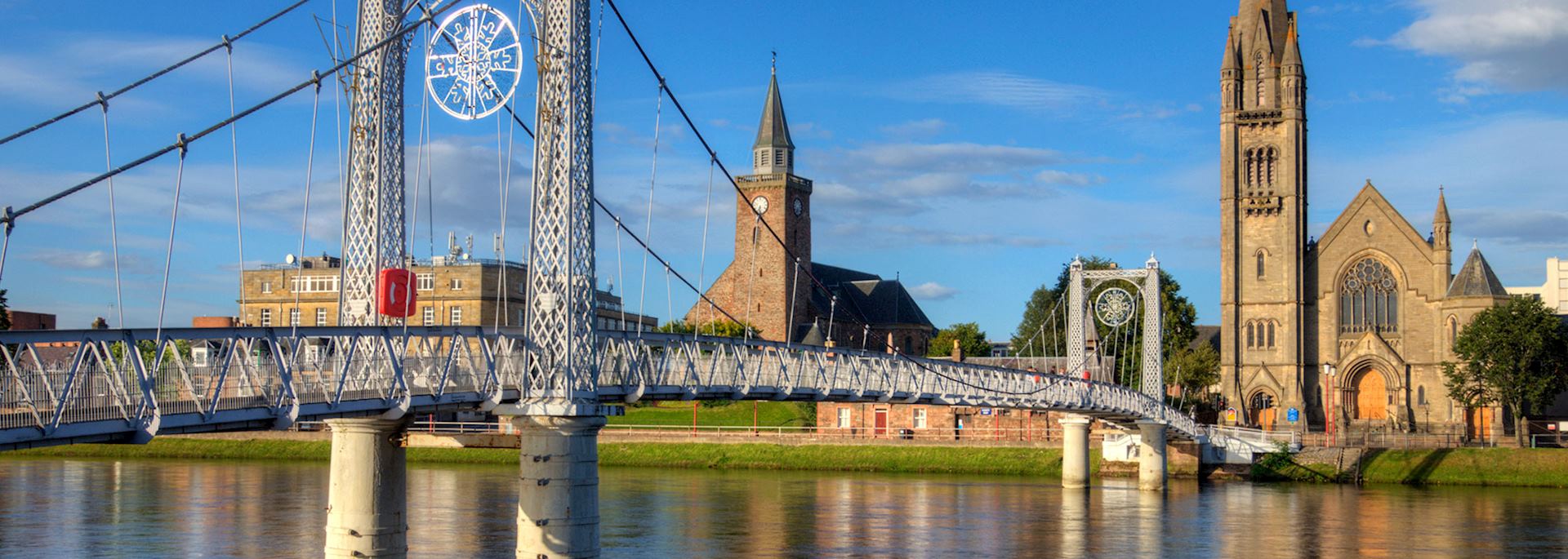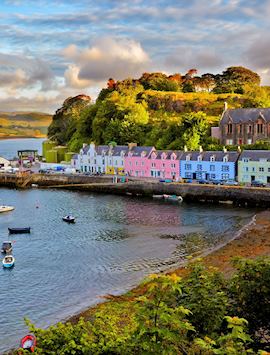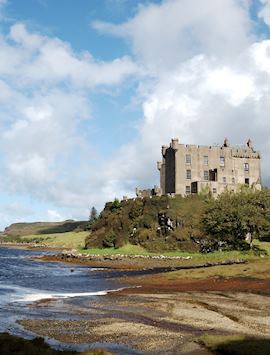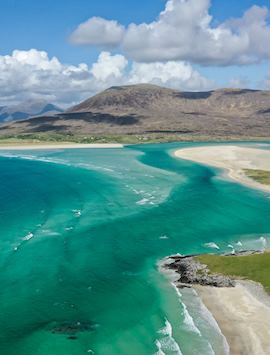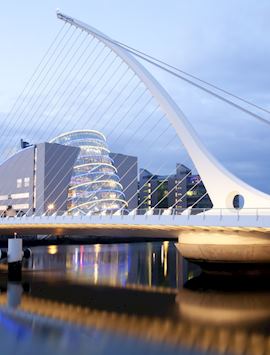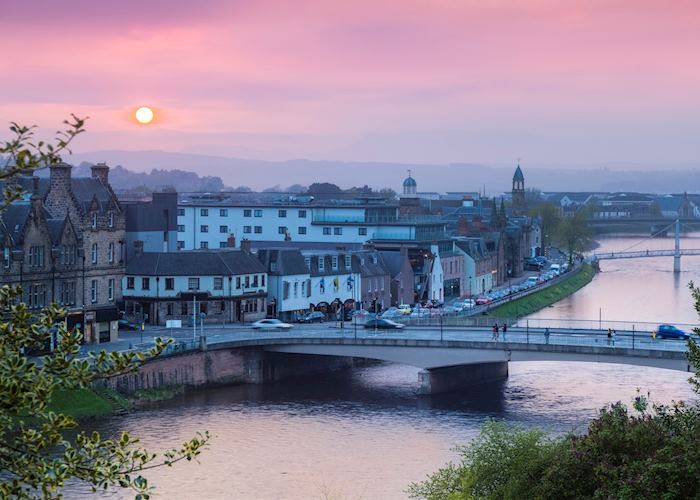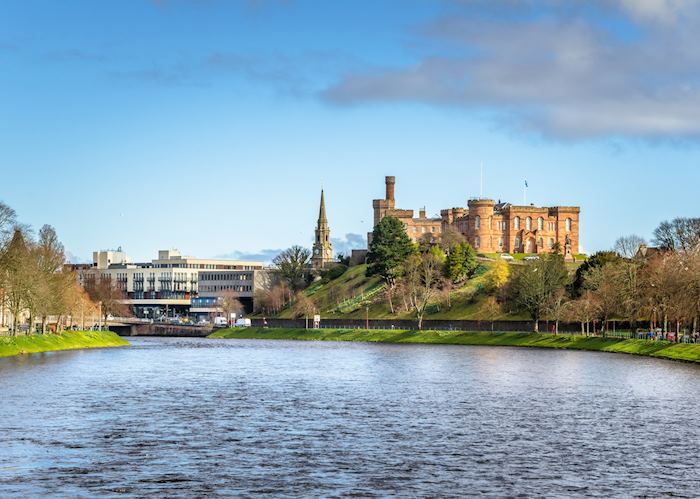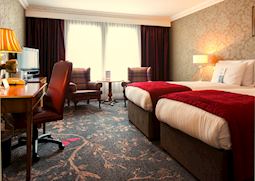Jump to:
Straddling the River Ness in Scotland's northeast, Inverness is the largest city in the Highlands, set attractively along the banks of the river from which it takes its name.
The city has a long and often bloody history and was the setting for the infamous Battle of Culloden, which brought an end to the Jacobite Rising, as well as Shakespeare's tragedy Macbeth. Although the medieval castle that inspired the playwright is long gone, its imposing 19th-century replacement still lords it over the river from its lofty setting.
Inverness is also a transport hub for the Highlands and makes an excellent base for exploring, with its vibrant atmosphere and strong local character.
UK & Ireland specialist VictoriaInverness gets a bad rep, and although parts of it have been rather over-developed, I find it beautiful, especially where the river borders traditional Gothic townhouses and the cathedral. In the evening you’ll find many pubs with live music.
Things to see and do in Inverness
Loch Ness and the Cairngorms
Set at the northern end of the Great Glen, a giant tectonic rift that divides Scotland diagonally, Inverness is surrounded by mountains and lakes and makes an ideal base for delving into the Highlands.
Legendary Loch Ness, home to the elusive monster, is a short drive away, while the craggy peaks of The Cairngorms are just to the south. Protected by the UK’s largest national park, it’s a region of wild mountains, deep ravines and scenic glens that is ideal for hill walking. If you're short on time, a funicular railway will take you to the edge of the monumental mountain plateau.
A riverside city
Meaning ‘Mouth of the River Ness’ in Scots Gaelic, Inverness grew up along the banks of the river. The waterway plays a central part in the city's character even today. A shallow, meandering stretch of water, it’s lined by mature trees and some of the city's most significant buildings.
A pathway runs along the river’s length, with several footbridges linking the banks. A stroll here offers an attractive introduction to the city, affording views of the cathedral, castle and the Inverness Museum and Art Gallery. Just to the south of the city are the Ness Islands, a tranquil cluster of river islets ideal for a picnic.
Culloden Battlefield
Jacobite leader Bonnie Prince Charlie finally faced defeat in his attempt to claim the British throne by loyalist troops at the 1746 Battle of Culloden, which took place just east of Inverness. Over 1,200 Highlanders died in the short but brutal battle, and their story is told at the visitor center on the bleak moor at Culloden where the fighting took place.
It's a wild and poignant place marked by memorials and laced with pathways. The battle brought an end to Scotland's age-old clan system and paved the way for the merciless Highland Clearances that followed. The country changed forever, making this one brief battle a landmark moment in Scottish history.
Clava Cairns
Set under mature trees near the banks of the River Nairn, the prehistoric burial chambers known as the Clava Cairns have an undeniable charm and mystique. This group of standing stones, passage graves and cairns (mounds of roughly arranged stones) dates back to the Bronze Age but is exceptionally well preserved despite being over 4,000 years old.
The wooded setting and lack of visitors makes this a magical place, and you can explore the inner chambers, study the rock markings and walk among the standing stones with little to distract your imagination from why these intriguing structures were built. The Clava Cairns are 11 km (7 miles) east of Inverness.
Cawdor Castle
 A monumental castle with high defensive walls and an intriguing history, Cawdor has been the seat of the Thanes of Cawdor since the 14th century. Their descendants still live in the castle, the original central tower now flanked by 17th-century additions.
A monumental castle with high defensive walls and an intriguing history, Cawdor has been the seat of the Thanes of Cawdor since the 14th century. Their descendants still live in the castle, the original central tower now flanked by 17th-century additions.
Although austere when seen from the meticulously kept gardens, this incredible family home feels grand but at the same time undeniably lived in. Family portraits, large-scale tapestries, colossal fireplaces and four-poster beds give it a very stately appeal.
The castle is mentioned in Shakespeare's Macbeth but has its own fairytale beginning, its location chosen by a weary donkey carrying a basket of gold coins. The castle is a 25-minute drive east of Inverness.
Fort George
This impressive 18th-century fortification set on a headland remains virtually intact and is one of the best examples of its kind in Europe. It was built to keep the rebellious Scots in check following the Battle of Culloden and is still used as a barracks today.
Inside, costumed actors and bright displays recreate the life of the original soldiers. It's also worth taking a walk around the ramparts for sweeping views of the sea. With luck, you might spot some of the dolphins that regularly pop out of the water here.
The fort is set in a strategic point at the opening of the Moray Firth, about half an hour's drive northeast of Inverness.
who's been there
-
617-223-4521617-223-4752
- Make an inquiry
Suggested itineraries featuring Inverness
Our itineraries will give you suggestions for what is possible when you travel in Inverness, and they showcase routes we know work particularly well. Treat them as inspiration, because your trip will be created uniquely by one of our specialists.
Places near Inverness
- Loch Ness 15 miles away
- Speyside 38 miles away
- The Cairngorms 40 miles away
- Fort William 57 miles away
- Glencoe 65 miles away
- The Highlands 69 miles away
- Isle of Skye 74 miles away
- Oban 88 miles away
- Loch Awe 91 miles away
- St Andrews 96 miles away
- Loch Lomond 103 miles away
- The Outer Hebrides 104 miles away
- Glasgow 113 miles away
- Isle of Jura 113 miles away
- Edinburgh 114 miles away
- Orkney 116 miles away
- Isle of Islay 141 miles away
- Shetland 212 miles away
- The Lake District 214 miles away
- York 273 miles away
- Liverpool 287 miles away
Photos of Inverness
Accommodation choices for Inverness
We've selected a range of accommodation options for when you visit Inverness. Our choices usually come recommended for their character, facilities and service or location. Our specialists always aim to suggest properties that match your preferences.
-
![Kingsmills Hotel, Inverness]()
Kingsmills Hotel
Inverness -
![Rocpool Reserve Hotel, Inverness]()
Rocpool Reserve Hotel
Inverness -
![Glenmoriston Town House Hotel, Inverness]()
Glenmoriston Town House Hotel
Inverness -
![Culloden House, Inverness]()
Culloden House
Inverness
